[Single-paragraph descriptions of bands and artists from Japan.]
----------
acidman
well-prooned, well-crooned indie sparkles. rock music on its twinkle-toes.
andymori
unambitious but easily disgestible servings of sedate guitar-led indie. an audio cheese sandwich.
asian kung-fu generation
guitar rock by numbers, but at times they colour between the lines very neatly.
aus
largely electronic sounds begin to resemble something as natural as the weather. like sitting in a virtual forest.
the black mages
metal versions of final fantasy music, featuring the composer himself. street-cred sold seperately.
boris
every day, a new way to burn your house down. noise-spaked amplifier worship in a variety of flavours - a history of rock music on their own.
buffalo daughter
perennial jam-happy mooglings. guitars and electronics gel well, often maintaining a certain floatiness, even at louder volumes.
chatmonchy
cute vocals and the occasional neat hook just about add enough sugar to this all-girl rock trio's vanilla sponde cake.
citrus
a photograph of your favourite band, but everything's out of focus. hang onto it anyway - even the blurs have a certain something.
cokiyu
sonic pictures of dreams, composed while still half-asleep. so transparent they might not even exist.
cornelius
music, chopped up with the sharpest of scalpels. reassembled, but not in the same order.
daisuck & prostitute
no wave noise rock, melded to the sound of a saxophone's warranty being invalidated. either that or there's a wolf in the sheep pen.
de de mouse
bright and cheery electronica that's sometimes spoiled by a heavily processed, high-pitched vocal. created by mouse for mice.
downy
you've taken a wrong turn in a city you've never been to before. it's dark. misty guitars curl around derelict houses built from drums and bass.
envy
the sweetest post-rock flows into the sourest hardcore. when it works it's incredible drama, when it doesn't it's painful hollywood flash-bang schmaltz.
far france
"full steam ahead! any direction will do!" unsurprisingly, these guitar jams often get lost, but the journey can be fun.
group_inou
enthusiastic raps over video game bleeps from a teen duo that don't ever pretend to be doing anything other than having fun.
ikimono gakari
as unashamedly cinematic as a slushy rom-com. guitars, sweet vocals, even a harmonica - it's all in there.
kahimi karie
early morning in a deserted parisian cafe. the waitress leans in, whispers something into your ear.
kashiwa daisuke
a future re-envisioning of classical music from the past that has somehow ended up in the present.
ketchup mania
girl-fronted pop-punk that doesn't care about the concept of originality, just about playing fast and hard.
lillies and remains
less influenced by post-punk; more an attempted reincarnation. pleasingly hooky joy division reimaginings that would have brought a smile to ian curtis' face, if said face was ever capable of such a thing.
lite
carefully layered instrumentals with both mood and purpose. used to hang on dark street corners, but have lately floated off into synthey outer space.
macdonald duck eclair
fuzzy drums, blaring synths and pounding bass combine to form something unexpectedly smooth - so much so that even the bossa nova segues don't seem out of place.
mass of the fermenting dregs
typically sweet-voiced girl fronts rock trio with thick chords and an occasional sharp riff. not nearly mean enough to deserve their death-metal band name.
melt-banana
punk-rock laserbeams from outer-space. you can practically see the colours pouring out of the speakers.
midori
psychotic schoolgirl and friends turn jazz into a bloodbath. the songs don't always live up to the aesthetic, but that's ok. they provide enough entertainment by just existing.
mono
both the loudest and quietest band in the world. the music is about how to get between the two, and how far they can go when they get there.
mothercoat
of course, writing a normal electronically-tinged indie rock song would be boring. duel boy/girl vocals and raw noise are just two of the cherries placed on top.
motoro faam
the work of a blind artist: vivid colour but no structure. sonic sketches using strings, piano and more. even the element of water is recruited as an instrument.
mouse on the keys
piano-led post-rock with a dark undercurrent. last waltz at the end of the universe.
natsumen
take notes, throw them in the air and play them in whatever order they land. a jazz mess, delivered with the vigour of unfed sharks.
nhhmbase
a band for whom time signatures are merely toys to be played with. the meticulously arranged notes proceed as orderly as a cog in a clockwork watch.
nissennenmondai
straddling the fine line between mind-melting and just annoying. repetitive grooves shift like glaciers: slow-moving but relentless. toe-tap your way to RSI.
nuito
mathier than thou instrumentals - no time to enjoy it, it's already over. a spectacular feat of memory.
number girl
fiercely ambitious rock music that doesn't always get where it wants to be. soupy production clogs up the drain.
ogre you asshole
the plodding grooves and criss-crossing chimes of modest mouse, without the bells and whistles. often enjoyable, but the lack of isaac brock's vocal chords means a lack of menace.
ooioo
deep in the jungle, captured by the guitar savages. as they dance to their tribal rhythms, you wonder what will become of you.
piana
child nervously presses a key on a dusty piano found in the attic. the noise is much more enveloping than expected. half-asleep, reality begins to deconstruct.
plus-tech squeeze box
modern japanese pop culture on fast-forward, a million samples per minute. like watching all of the channels at once.
polysics
the quintessential "look! isn't japan weird!?" band. weird costumes, weirder music: devo-influenced video-game punk rock with energy to burn.
pupa
on a quiet fishing trip you receive warm, friendly advice from a trusted friend who's been there and done it all. collaboration between 6 stalwarts of the japanese musical world.
quomolangma tomato
the indieish-post-hardcore tunes show the occasional neat lick, but this band's dominated by the love/hate vocals. who needs talent when you've got enthusiasm?
rega
like holding your thumb over the hosepipe, notes spray in all directions. nevertheless, nothing ever - ever - gets in the way of the groove. guitar jams or death.
rovo
effects-laden slow burners. a stick of incense uncoiling over the course of a long night at the morroccan opium den.
school food punishment
electronically detailed pop-rock music that isn't quite as cutting-edge as advertised. the robots should ignore their programming and zoom on to the future!
shiina ringo
j-pop megastar decides she can do what she wants, releases bizarre album that references death, religion and the smell of semen. one of japan's uniques.
shugo tokumaru
tucked away in the garden shed, the music inventor builds his tinker-pop from nothing more than household objects and imagination.
sonic coaster pop
birthday party at the space station. glitter drifts in zero-gravity, we ride on shooting stars! a mixture of electronica and child-like glee.
sour
intricate and delicate music with a darker edge, by turns lurking deep or shallow in the background. the vocals have more cracks than a mosaic, but the pieces still shimmer in the sunlight.
相対性理論 (soutaiseiriron / theory of relativity)
the best treehouses: planned and plotted in relentless detail, but the finished work looks like it might've grown naturally out of the branches. a little girl swings her legs, singing softly from among the leaves.
special others
tags like "jazz" and "pock-rock" only complicate the simple reality of a talented band making attractive music. it's only occasionally that they touch on something more.
swarrrm
popular recipe from the grindcore cookbook. usp: the vocalist seems to be having a breakdown. a proper one, with full-on loss of both sanity and enunciation.
takako minekawa
the softly-sung, downbeat mood doesn't stop this from being hugely ambitious music. the liberal use of samples gives access to an sound palette that is possibly a little too large.
te'
pretentious song titles: the price you pay for music of such terrifying intent. at its worst, smartly structured post-rock; at its best, as captivating as anything in the genre.
toe
on paper - just another pretty instrumental guitar band. in practice - the best. perfect melodies, driven along by a drummer who contributes as much to the feeling of the songs as any guitarist.
tomoyo harada
a picture postcard from far away. it's been years. she still has that elegant handwriting.
tujiko noriko
in audio: the events just prior to the decision to give up. the straw that broke the camel's back. the loneliest solo artist in japan.
unchain
irrepressibly cheery summer guitar pop. it does get a bit bright, and some people will run for the shade. they should probably just lighten up.
unholy grave
vanilla-flavoured grindcore; it's probably been in the freezer for months. appropriately unhinged vocals from some sort of bovine zombie.
unkie
spiky, garage rock instrumentals. crying out for some sweaty sleazebag to pick up a mic and start yowling.
wienners
in a world where the frosted sugar bomb pop punk of polysics already exists, what do you do is your band sounds the same? easy, just play faster and jump around more.
yanokami
gentle pop/electronica collaboration between two old hands. perfectly pleasant, but nobody's socks are being blown off.
zazen boys
funk-everything-tinged rock veers wildly between enjoyable and self-indulgent. on vocals: crazy street preacher frothing at the mouth.
1000 travels of jawaharlal
hot snakes / hot cross / hot water music....like the toastiest americans, it's good to keep things simple. pleasingly loose and noisy.
3nd
confident rock instrumentals with a flair for the dramatic; they're stadium rockers in another universe. try and pretend the quiet songs don't exist.
54-71
stubborn grooves from a meandering bass, a discreet guitar and a stripped-down drumkit. tighter than an astronaut's seatbelt. fervent sermons aren't quite screamed, aren't quite rapped.
9mm parabellum bullet
try-hard vocals and a fondness for re-using metal stereotypes stop these rockers from being as good as their energy and invention probably deserve. somebody rip their jeans and steal their hairspray. they need a bit of rough.
storyprompt.
[For around a year, I published a series of daily writing prompts and ideas on Twitter.
http://twitter.com/#!/storyprompt
Here is a selection.]

----------
Hanging on by your fingertips from the window ledge of the bedroom of the royal princess of a country you'd never been to before last week.
Walking as far as you can, eyes screwed tightly shut. After a while you lose all sense of time or place.
Packed: A compass. The old map. Some food, wrapped in brown paper. A skin of water, bulging at its seams. And a single photograph.
That first cigarette, legs dangling off the unfinished bridge at the end of the world.
Balancing precariously. You keep as still as possible, praying like hell that the wind doesn't pick up.
Living in the belly of a whale. Plotting your escape.
And that's how you ended up in the middle of Piccadilly station, wearing somebody else's clothes.
Everyone in animal masks. They can't tell you're an outsider.
Stumbles across a sculpture of bones; an underwater graveyard for sharks.
The drums get louder. There is dancing, singing. You strain at the ropes. All the time, the drums get louder.
You went to live alone in a cottage in the woods. That was forty years ago. Now it's time to go back.
Rescued from a burning building by someone you really hate.
Acid rain. The thick, fat green clouds are gathered on the horizon, being blown this way.
As a child, your parents forced you to memorise an entire encyclopaedia.
In her pockets: Fluffy the Rabbit, four biscuits....and a knife. Lucy left home at dawn, the airship ticket held in a tight, tiny hand.
Making a dress for the princess. The pinnacle of your career.
The cast - ill, injured, changes of heart. Someone really doesn't want this play to happen. But the show must go on.
Every human is allowed to break the law once in their lifetime, with no consequences.
A small amount of a strangely-coloured, thick liquid sits in the bottom of a glass tube. "Two steps forward, one step back", you think.
Orchestra, on tour. Lost in the snow, with only two days until the next concert. The mood is sombre, until Phillippe strikes up a song.
When you open your eyes, you aren't where you were a moment ago.
Pilgrimage to a dank basement in a dirty back street in downtown New Orleans.
You are: Smaller than a fly, stronger than a bull.
Daytime - fixed at 12 hours on, 12 hours off.
Beached whale, moans terribly; seems injured, though no-one sees where. It opens its mouth wide...a team of experts heads in to explore.
A network of wooden walkways, built upon stilts. They lead across the swamp.
Deciphered: the language of birds. With enough effort, it can be learned. Ten people in the world are fluent. There is one native speaker.
The mood grows awkward between the crew and the captain.
Shadow in the water. Bigger than you. Bigger than the boat. Your daughter's craning her neck over the side, trying to see what it is.
The girl with the birthmark on her face, the guy who's confident but not popular, and the captain of the football team.
Giant bird stalks remote village. Going outside is impossibly dangerous.
Discovered: sound waves damage your health. By strict government order, music is banned. Viva la resistance!
Delusions: the girl believes she's made of glass.
Miss America's time in prison.
It drips on the unconscious man.
Boy with accordion. Fox in backpack.
Wolf girl, rides bicycle.
The colour pink and the colour grey have swapped for the weekend.
New wireless headphones: stuck in your ears. One song on repeat, and nothing you can do about it.
One-way ticket for the train to the end of the world. Everyone on board is wearing a mask. Out of the window: endless fog.
Tomorrow: the world dolphin training championships. You've practiced hard, but now Sparky's gone missing! Oh no! What could have happened?
In a small area of Africa, over a period of around a fortnight, every single giraffe turns up dead. Science is at a loss to explain it.
They weren't there when you went to sleep. But you wake up, and there they are - four words, scrawled messily on the ceiling.
Man lives aboard first flying home, an aircraft, refueled every day in midflight. His son, born in the sky, has never been on the ground.
All you can remember in this sort of situation is the one piece of advice you were given before you left: don't drink the seawater.
You've won! One plane ticket to anywhere. The catch: you pick a plane. We'll tell you where it's going after it leaves.
The world's cities: overrun by wild animals. But as always, society learns to cope.
Revealed: offshore wind farms for blowing, not for being blown. The British Isles are sailing away. But to where? And who's doing this?
I was raised by wolves, but have since left the forest, and adjusted to society...with the exception of one behaviour I can't seem to shake.
Every emotion you feel is doubled, from this moment on.
In ten seconds, you will be on live television. Ten....nine....
You know someone who always does what they are told.
Your current emotional state, summed up in one word, appears on your forehead - approximately once every five minutes.
You can speak every language in the world. Everyone else only speaks their native tongue.
You can read entire books in a matter of seconds.
Your new job is to photograph every species of animal on the planet.
Your wireless headphones get stuck in your ears, and you lose the player. You can't stop listening.
You own a hot air balloon.
You go temporarily blind at 7pm every evening, for a single hour.
http://twitter.com/#!/storyprompt
Here is a selection.]

----------
Hanging on by your fingertips from the window ledge of the bedroom of the royal princess of a country you'd never been to before last week.
Walking as far as you can, eyes screwed tightly shut. After a while you lose all sense of time or place.
Packed: A compass. The old map. Some food, wrapped in brown paper. A skin of water, bulging at its seams. And a single photograph.
That first cigarette, legs dangling off the unfinished bridge at the end of the world.
Balancing precariously. You keep as still as possible, praying like hell that the wind doesn't pick up.
Living in the belly of a whale. Plotting your escape.
And that's how you ended up in the middle of Piccadilly station, wearing somebody else's clothes.
Everyone in animal masks. They can't tell you're an outsider.
Stumbles across a sculpture of bones; an underwater graveyard for sharks.
The drums get louder. There is dancing, singing. You strain at the ropes. All the time, the drums get louder.
You went to live alone in a cottage in the woods. That was forty years ago. Now it's time to go back.
Rescued from a burning building by someone you really hate.
Acid rain. The thick, fat green clouds are gathered on the horizon, being blown this way.
As a child, your parents forced you to memorise an entire encyclopaedia.
In her pockets: Fluffy the Rabbit, four biscuits....and a knife. Lucy left home at dawn, the airship ticket held in a tight, tiny hand.
Making a dress for the princess. The pinnacle of your career.
The cast - ill, injured, changes of heart. Someone really doesn't want this play to happen. But the show must go on.
Every human is allowed to break the law once in their lifetime, with no consequences.
A small amount of a strangely-coloured, thick liquid sits in the bottom of a glass tube. "Two steps forward, one step back", you think.
Orchestra, on tour. Lost in the snow, with only two days until the next concert. The mood is sombre, until Phillippe strikes up a song.
When you open your eyes, you aren't where you were a moment ago.
Pilgrimage to a dank basement in a dirty back street in downtown New Orleans.
You are: Smaller than a fly, stronger than a bull.
Daytime - fixed at 12 hours on, 12 hours off.
Beached whale, moans terribly; seems injured, though no-one sees where. It opens its mouth wide...a team of experts heads in to explore.
A network of wooden walkways, built upon stilts. They lead across the swamp.
Deciphered: the language of birds. With enough effort, it can be learned. Ten people in the world are fluent. There is one native speaker.
The mood grows awkward between the crew and the captain.
Shadow in the water. Bigger than you. Bigger than the boat. Your daughter's craning her neck over the side, trying to see what it is.
The girl with the birthmark on her face, the guy who's confident but not popular, and the captain of the football team.
Giant bird stalks remote village. Going outside is impossibly dangerous.
Discovered: sound waves damage your health. By strict government order, music is banned. Viva la resistance!
Delusions: the girl believes she's made of glass.
Miss America's time in prison.
It drips on the unconscious man.
Boy with accordion. Fox in backpack.
Wolf girl, rides bicycle.
The colour pink and the colour grey have swapped for the weekend.
New wireless headphones: stuck in your ears. One song on repeat, and nothing you can do about it.
One-way ticket for the train to the end of the world. Everyone on board is wearing a mask. Out of the window: endless fog.
Tomorrow: the world dolphin training championships. You've practiced hard, but now Sparky's gone missing! Oh no! What could have happened?
In a small area of Africa, over a period of around a fortnight, every single giraffe turns up dead. Science is at a loss to explain it.
They weren't there when you went to sleep. But you wake up, and there they are - four words, scrawled messily on the ceiling.
Man lives aboard first flying home, an aircraft, refueled every day in midflight. His son, born in the sky, has never been on the ground.
All you can remember in this sort of situation is the one piece of advice you were given before you left: don't drink the seawater.
You've won! One plane ticket to anywhere. The catch: you pick a plane. We'll tell you where it's going after it leaves.
The world's cities: overrun by wild animals. But as always, society learns to cope.
Revealed: offshore wind farms for blowing, not for being blown. The British Isles are sailing away. But to where? And who's doing this?
I was raised by wolves, but have since left the forest, and adjusted to society...with the exception of one behaviour I can't seem to shake.
Every emotion you feel is doubled, from this moment on.
In ten seconds, you will be on live television. Ten....nine....
You know someone who always does what they are told.
Your current emotional state, summed up in one word, appears on your forehead - approximately once every five minutes.
You can speak every language in the world. Everyone else only speaks their native tongue.
You can read entire books in a matter of seconds.
Your new job is to photograph every species of animal on the planet.
Your wireless headphones get stuck in your ears, and you lose the player. You can't stop listening.
You own a hot air balloon.
You go temporarily blind at 7pm every evening, for a single hour.
upper and lower slaughter.
[This article is one of several hundred I have written for Pocket Places, a UK web-based tourism information company. Their brief was to refrain from offering opinions, and to instead focus on presenting the facts about each place in as readable and entertaining a way as possible.
http://www.pocketplaces.co.uk/ ]

----------
Upper and Lower Slaughter are two neighbouring villages in the Cotswolds. You'll be happy to hear that very little slaughtering actually goes on here. The settlements' unnerving names actually come from an old English word meaning "muddy place". This too is misleading, as neither of them are particularly dirty. Instead, they're bright and clean, full of green grass and yellow stone.
The villages exude an antique charm. They feel like the England of a bygone age. This is unsurprising when you find out that not a single building project has been carried out here since 1906.
Upper Slaughter is the smaller of the two. It contains barely more than a few houses, making it one of the quietest places in a county that's famous for its quiet places. The prettiest building is arguably the Lord of the Manor Hotel, which was converted from a 17th century mansion. However, St. Peter's Church gives it a run for its money. Both properties offer views of the surrounding meadows and the nearby waterway.
The water in question is the River Eye, which might more accurately be called a stream. It runs just a few hundred metres to the south, connecting the village of Upper Slaughter to its Lower sibling.
Towards the end of the river is a restored 19th century flour mill. It hasn't been used commercially since 1958, but the huge waterwheel still turns. The building is owned by a former singer called Gerald Harris. It's therefore no surprise to hear his favourite old songs floating through the air. You can buy jazz CDs from the 30s and 40s at the gift shop, which also sells all manner of locally-produced arts and crafts. Elsewhere, the site includes a small museum and an ice cream parlour.
You can easily spot the Old Mill by looking for its red chimney. It's the only building in the entire village to use brick. All the others are made exclusively from stone, giving Lower Slaughter that traditionally quaint Cotswolds appearance.
Tourist attractions like the Mill mean that Lower Slaughter is the more popular of the two villages but, in truth, their real appeal isn't related to any specific place. It's the overall atmosphere that's special, and that's something which is shared by both settlements.
http://www.pocketplaces.co.uk/ ]

----------
Upper and Lower Slaughter are two neighbouring villages in the Cotswolds. You'll be happy to hear that very little slaughtering actually goes on here. The settlements' unnerving names actually come from an old English word meaning "muddy place". This too is misleading, as neither of them are particularly dirty. Instead, they're bright and clean, full of green grass and yellow stone.
The villages exude an antique charm. They feel like the England of a bygone age. This is unsurprising when you find out that not a single building project has been carried out here since 1906.
Upper Slaughter is the smaller of the two. It contains barely more than a few houses, making it one of the quietest places in a county that's famous for its quiet places. The prettiest building is arguably the Lord of the Manor Hotel, which was converted from a 17th century mansion. However, St. Peter's Church gives it a run for its money. Both properties offer views of the surrounding meadows and the nearby waterway.
The water in question is the River Eye, which might more accurately be called a stream. It runs just a few hundred metres to the south, connecting the village of Upper Slaughter to its Lower sibling.
Towards the end of the river is a restored 19th century flour mill. It hasn't been used commercially since 1958, but the huge waterwheel still turns. The building is owned by a former singer called Gerald Harris. It's therefore no surprise to hear his favourite old songs floating through the air. You can buy jazz CDs from the 30s and 40s at the gift shop, which also sells all manner of locally-produced arts and crafts. Elsewhere, the site includes a small museum and an ice cream parlour.
You can easily spot the Old Mill by looking for its red chimney. It's the only building in the entire village to use brick. All the others are made exclusively from stone, giving Lower Slaughter that traditionally quaint Cotswolds appearance.
Tourist attractions like the Mill mean that Lower Slaughter is the more popular of the two villages but, in truth, their real appeal isn't related to any specific place. It's the overall atmosphere that's special, and that's something which is shared by both settlements.
northumberland's museums.
[This article is one of several hundred I have written for Pocket Places, a UK web-based tourism information company. Their brief was to sum up the facts and attractions about each place in a single paragraph, while making it as readable and entertaining as possible.
http://www.pocketplaces.co.uk/ ]

----------
Woodhorn Museum
For most of the 20th century this was a busy coal mine. Nearly 2000 men worked to extract 600,000 tons per year. A recent redevelopment transformed the place into a museum. One of the new additions was the breathtaking Cutter Building, designed and named after the monstrous coal cutting machines that were used deep underground. Inside, a series of exhibitions look at the area's history and heritage. Next door, the old engine houses are kept in antique condition. The long, thin workshops, meanwhile, have been converted into more functional spaces. The site has hosted a variety of guest exhibitions, from celebrity cars to Wallace and Gromit memorabilia. However, the main focus is always on the miners. Woodhorn uses the latest technology to recreate the confined, sweaty conditions they had to endure.
Grace Darling Museum
In 1838, a young 22-year-old called Grace Darling risked her life in a frail row boat to rescue a shipwreck's desperate survivors. This museum, set up a century later, pays tribute to her courageous deed. As well as telling the tale of that fateful day, there are collections of Grace's clothes, letters and photographs. The centrepieces of the exhibit are a 2.5 metre replica of the Darling family's lighthouse, and the actual boat the rescue was conducted in. The museum is run by the Royal National Lifeboat Institution, for whom Grace is something of a hero.
Bellingham Heritage Centre
The creators of this museum are fascinated with the area they live in. Their heritage centre looks at its entire history, from old conflicts to new railways. Along the way it shows how Northumberland's residents lived and worked, whether it was on a farm or inside a coal mine. A collection of 2600 photographs documents the area's transformation since the early 20th century. The museum has even asked the locals themselves to recount wistful tales of life as it once was.
Morpeth Chantry Bagpipe Museum
Through much of the 20th century, a clock-maker called William Alfred Cocks amassed a huge collection of old and rare bagpipes. His hobby became the foundation of this unusual museum in Morpeth, which focuses entirely on the traditional Scottish instrument. There are examples from places as far away as India. Visitors can listen to the bagpipes' distinctive music through sets of personal headphones. The 13th century church building provides an appropriately elegant setting for this unique exhibition.
Roman Vindolanda
Vindolanda was an important Roman fort near the Scottish border. In recent years the site turned into a huge archaeological dig. Over many decades, these excavations have unearthed thousands of items, teaching us a lot about how the Romans lived. This on-site museum displays these valuable finds, including tools, textiles and pottery. The collection of leather is the largest in the world. The most precious artefacts are the 2000-year-old writing tablets. Most are military documents, although others seem to be shopping lists or party invitations! Some are on display, but the majority are now housed at the British Museum. Elsewhere at Vindolanda are recreations of a Roman temple, a shop and a home. Meanwhile, the archaeological digs still happen every year, so more treasures may yet be found!
Cherryburn
In 1753, the delightfully-named Cherryburn cottage was the birthplace of Thomas Bewick. He grew up to become a wood engraver, a naturalist and arguably Northumberland's greatest artist. The building is owned by the National Trust, who display it to the public. A nearby farmhouse, which was also inhabited by the Bewick family, showcases his life and work. The engraving demonstrations show how Thomas created his pieces, and the shop sells replicas of the finished products. Outside, there's a farmyard full of friendly animals. The River Tyne passes nearby, before winding its way on through the pretty countryside that the Bewicks loved so much.
http://www.pocketplaces.co.uk/ ]

----------
Woodhorn Museum
For most of the 20th century this was a busy coal mine. Nearly 2000 men worked to extract 600,000 tons per year. A recent redevelopment transformed the place into a museum. One of the new additions was the breathtaking Cutter Building, designed and named after the monstrous coal cutting machines that were used deep underground. Inside, a series of exhibitions look at the area's history and heritage. Next door, the old engine houses are kept in antique condition. The long, thin workshops, meanwhile, have been converted into more functional spaces. The site has hosted a variety of guest exhibitions, from celebrity cars to Wallace and Gromit memorabilia. However, the main focus is always on the miners. Woodhorn uses the latest technology to recreate the confined, sweaty conditions they had to endure.
Grace Darling Museum
In 1838, a young 22-year-old called Grace Darling risked her life in a frail row boat to rescue a shipwreck's desperate survivors. This museum, set up a century later, pays tribute to her courageous deed. As well as telling the tale of that fateful day, there are collections of Grace's clothes, letters and photographs. The centrepieces of the exhibit are a 2.5 metre replica of the Darling family's lighthouse, and the actual boat the rescue was conducted in. The museum is run by the Royal National Lifeboat Institution, for whom Grace is something of a hero.
Bellingham Heritage Centre
The creators of this museum are fascinated with the area they live in. Their heritage centre looks at its entire history, from old conflicts to new railways. Along the way it shows how Northumberland's residents lived and worked, whether it was on a farm or inside a coal mine. A collection of 2600 photographs documents the area's transformation since the early 20th century. The museum has even asked the locals themselves to recount wistful tales of life as it once was.
Morpeth Chantry Bagpipe Museum
Through much of the 20th century, a clock-maker called William Alfred Cocks amassed a huge collection of old and rare bagpipes. His hobby became the foundation of this unusual museum in Morpeth, which focuses entirely on the traditional Scottish instrument. There are examples from places as far away as India. Visitors can listen to the bagpipes' distinctive music through sets of personal headphones. The 13th century church building provides an appropriately elegant setting for this unique exhibition.
Roman Vindolanda
Vindolanda was an important Roman fort near the Scottish border. In recent years the site turned into a huge archaeological dig. Over many decades, these excavations have unearthed thousands of items, teaching us a lot about how the Romans lived. This on-site museum displays these valuable finds, including tools, textiles and pottery. The collection of leather is the largest in the world. The most precious artefacts are the 2000-year-old writing tablets. Most are military documents, although others seem to be shopping lists or party invitations! Some are on display, but the majority are now housed at the British Museum. Elsewhere at Vindolanda are recreations of a Roman temple, a shop and a home. Meanwhile, the archaeological digs still happen every year, so more treasures may yet be found!
Cherryburn
In 1753, the delightfully-named Cherryburn cottage was the birthplace of Thomas Bewick. He grew up to become a wood engraver, a naturalist and arguably Northumberland's greatest artist. The building is owned by the National Trust, who display it to the public. A nearby farmhouse, which was also inhabited by the Bewick family, showcases his life and work. The engraving demonstrations show how Thomas created his pieces, and the shop sells replicas of the finished products. Outside, there's a farmyard full of friendly animals. The River Tyne passes nearby, before winding its way on through the pretty countryside that the Bewicks loved so much.
national railway museum.
[This article is one of several hundred I have written for Pocket Places, a UK web-based tourism information company. Their brief was to refrain from offering opinions, and to instead focus on presenting the facts about each place in as readable and entertaining a way as possible.]

----------
The National Railway Museum is the largest of its type in the world, and lays claim to more than 700,000 visitors a year. This makes it more popular than any other museum in the country, outside of London.
It has existed in some form since the 1800s, but the present site was opened by Prince Philip in 1975 - appropriately enough, right next door to York Railway Station. There is actually a rail link connecting the two places, allowing the museum to continually change the models on display. This means there's always something new to see.
However, the most popular exhibits are permanent, and they begin with several ancient-looking vehicles, from as early as 1815. These include a bright yellow replica of “The Rocket”, one of the first steam locomotives to come into commercial use. This signified the beginning of widespread train transport, but it didn't have the best start. The Rocket only travelled at 12 miles an hour, but on its first day, it accidentally ran over a government MP!
Of course, rail travel has changed a lot since then, and nothing is a better example than the “Palaces on Wheels” area, which displays royal trains unmatched in opulence. Queen Victoria was the first monarch to be a rail passenger, in 1842, and now Queen Elizabeth is continuing the tradition. In fact, she reportedly prefers trains to any other form of travel! Carriages used by both queens are available for viewing, but these still aren't the pinnacle of train technology.
That accolade probably goes to the Japanese bullet train. With its streamlined body and rocked-shaped nose, it looks more like a spaceship than public transport. Even with a top-speed of 220 miles per hour, it is one of the safest trains ever made. York is the only place in the world to see one, outside of Japan.
Other models in the collection range far and wide, from the “Mallard”, the fastest steam train ever built, to the “Flying Scotsman”, which is perhaps the most famous. Even Harry Potter's favourite vehicle, the Hogwarts Express, visited in 2004. But that's not everything. The museum also displays a huge range of rail-related items, from tickets and posters, all the way to a section of the Channel Tunnel. Visitors can ride on mini-trains, or watch real rail engineers carry out their work.
In fact, the National Rail Museum has been praised for its new ideas. It recently implemented a modern search system, for easy access to its vast archives. It also staged a theatrical production of “The Railway Children”, which was very well received by critics. There's always something interesting going on, which led to its crowning as the European Museum of the Year in 2001. So, for any visitor to York, it's a must-see.
---------
link to article:
http://www.pocketplaces.info/York/nationalrail.html

----------
The National Railway Museum is the largest of its type in the world, and lays claim to more than 700,000 visitors a year. This makes it more popular than any other museum in the country, outside of London.
It has existed in some form since the 1800s, but the present site was opened by Prince Philip in 1975 - appropriately enough, right next door to York Railway Station. There is actually a rail link connecting the two places, allowing the museum to continually change the models on display. This means there's always something new to see.
However, the most popular exhibits are permanent, and they begin with several ancient-looking vehicles, from as early as 1815. These include a bright yellow replica of “The Rocket”, one of the first steam locomotives to come into commercial use. This signified the beginning of widespread train transport, but it didn't have the best start. The Rocket only travelled at 12 miles an hour, but on its first day, it accidentally ran over a government MP!
Of course, rail travel has changed a lot since then, and nothing is a better example than the “Palaces on Wheels” area, which displays royal trains unmatched in opulence. Queen Victoria was the first monarch to be a rail passenger, in 1842, and now Queen Elizabeth is continuing the tradition. In fact, she reportedly prefers trains to any other form of travel! Carriages used by both queens are available for viewing, but these still aren't the pinnacle of train technology.
That accolade probably goes to the Japanese bullet train. With its streamlined body and rocked-shaped nose, it looks more like a spaceship than public transport. Even with a top-speed of 220 miles per hour, it is one of the safest trains ever made. York is the only place in the world to see one, outside of Japan.
Other models in the collection range far and wide, from the “Mallard”, the fastest steam train ever built, to the “Flying Scotsman”, which is perhaps the most famous. Even Harry Potter's favourite vehicle, the Hogwarts Express, visited in 2004. But that's not everything. The museum also displays a huge range of rail-related items, from tickets and posters, all the way to a section of the Channel Tunnel. Visitors can ride on mini-trains, or watch real rail engineers carry out their work.
In fact, the National Rail Museum has been praised for its new ideas. It recently implemented a modern search system, for easy access to its vast archives. It also staged a theatrical production of “The Railway Children”, which was very well received by critics. There's always something interesting going on, which led to its crowning as the European Museum of the Year in 2001. So, for any visitor to York, it's a must-see.
---------
link to article:
http://www.pocketplaces.info/York/nationalrail.html
rare flowers of the world.
Phoenix Flower

The Phoenix Flower is prized for its bright petals, of course.
It has no leaves, so it has real trouble making chlorophyll. Because of this, each flower dies, shortly after sunset.
However, the seeds it leaves behind have an incredible germination speed, and so, shortly after sunrise, a new, full-size plant grows in the exact same spot as before.
It has no leaves, so it has real trouble making chlorophyll. Because of this, each flower dies, shortly after sunset.
However, the seeds it leaves behind have an incredible germination speed, and so, shortly after sunrise, a new, full-size plant grows in the exact same spot as before.
Invisible Daffodil

This flower was discovered in 1871 by an explorer called Stanley Rourke, deep in the mountains of Peru.
Unfortunately he was unable to bring a sample back, and none have since been discovered. There is no further data or information.
Before his death, Rourke also discovered the Transparent Daffodil, the Glass Posy, and the African Chameleon Flower.
Double Daisy

White daisies usually grow on the bright, sunny sides of mountains. Black daisies grow on the darker, wetter sides of mountains.
The Double Daisy is a very rare flower that grows only on the very tops of tall mountains, soaking up both the sun and rain. It turns pale on one side, and dark on the other.
These daises are worth lots of money, so some flower dealers make fake ones by cutting white and black daisies in half, and combining the two. However, they never usually do the stems, so check there for authenticity.
Gloomy Sponge
The Double Daisy is a very rare flower that grows only on the very tops of tall mountains, soaking up both the sun and rain. It turns pale on one side, and dark on the other.
These daises are worth lots of money, so some flower dealers make fake ones by cutting white and black daisies in half, and combining the two. However, they never usually do the stems, so check there for authenticity.
Gloomy Sponge

In the deepest caves and the darkest caverns, these are usually one or two of these completely black-coloured flowers.
They have tiny petals (as there's no need for them) and numerous leaves (to pick up every drop of light they can).
They can survive on mere drops of light for months at a time. Botanists estimate that they receive this from fireflies.
No-one knows what would happen if these flowers were placed outside, in direct sunlight.
Drooping Hightrap
They have tiny petals (as there's no need for them) and numerous leaves (to pick up every drop of light they can).
They can survive on mere drops of light for months at a time. Botanists estimate that they receive this from fireflies.
No-one knows what would happen if these flowers were placed outside, in direct sunlight.
Drooping Hightrap

This plant looks like a tree, and is as tall as a tree – but it's actually a flower, and as such, its huge petals close up at night.
This behaviour may resemble that of various carnivorous plants, but in fact, no digestion occurs. Consequently, small animals often use the nightly cage as a sort of airborne shelter.
In fact, when the petals open up in the morning, there's no knowing what's going to fall out.
Roman Candle
This behaviour may resemble that of various carnivorous plants, but in fact, no digestion occurs. Consequently, small animals often use the nightly cage as a sort of airborne shelter.
In fact, when the petals open up in the morning, there's no knowing what's going to fall out.
Roman Candle
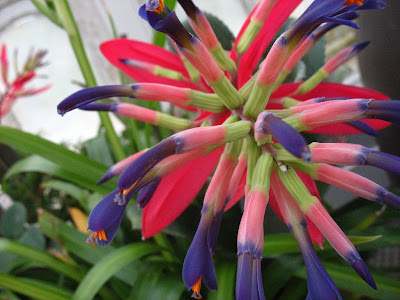
This multicoloured plant produces an innumerable amount of seeds – but each of them has an infinitely minuscule chance of actually taking root.
Its bright, garish petals attract the maximum amount of insects, of all different species, to which the plant's sticky seeds attach themselves. The creatures spread the seeds far and wide, giving them the highest possible chance of germinating.
Nowegian Royal
Its bright, garish petals attract the maximum amount of insects, of all different species, to which the plant's sticky seeds attach themselves. The creatures spread the seeds far and wide, giving them the highest possible chance of germinating.
Nowegian Royal

Due to an anomaly in the local soil nutrients, this flower only grows in the Norwegian royal gardens.
As such, it is celebrated throughout the country in art, poetry, and song, as the most beautiful flower in the world.
Despite this, the Norwegian Royal is generally considered to be rather ugly, and possibly even a weed rather than a flower.
Alpine Howler
As such, it is celebrated throughout the country in art, poetry, and song, as the most beautiful flower in the world.
Despite this, the Norwegian Royal is generally considered to be rather ugly, and possibly even a weed rather than a flower.
Alpine Howler
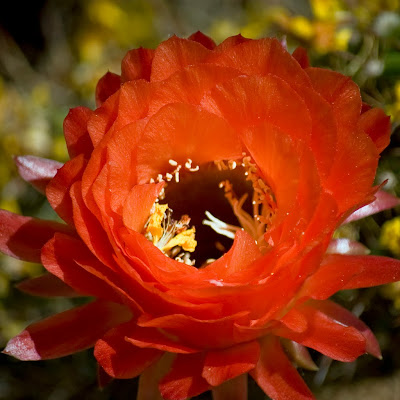
These flowers have a finger-sized hole, or funnel, in their centre. When the wind blows, it rushes through this gap, causing a sound not unlike the howling of a wolf.
Rabbits and other small animals have been known to settle down close by to patches of Alpine Howlers, in the hope that the noise will deter the would-be predators.
Salisbury Pinhead
Rabbits and other small animals have been known to settle down close by to patches of Alpine Howlers, in the hope that the noise will deter the would-be predators.
Salisbury Pinhead

The Salisbury Pinhead is the smallest flower in the world, and is in fact even smaller than an actual pinhead. Its real size is more like the point of a needle.
The flower has been known about for some time – but for years it remained out of the official textbooks because botanists couldn't agree on whether or not it was actually there.
Thousand Needle
The flower has been known about for some time – but for years it remained out of the official textbooks because botanists couldn't agree on whether or not it was actually there.
Thousand Needle
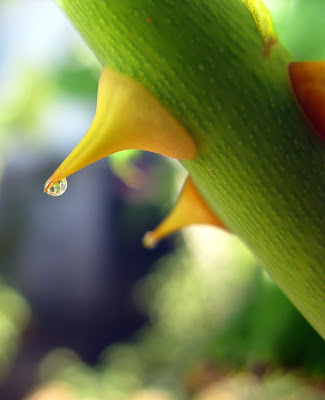
The large petals of the Thousand Needle are colourful, soft, and attractive. In addition, the plant exudes a pleasant, sweet smell. This leads to many people trying to pick it from the ground, for decorative purposes.
However, when this happens, the would-be picker's fingers are invariably cut by one of the numerous, tiny barbs along the stem.
The plant gains many of its essential nutrients from the blood of human fingers.
Sleeping Beauty
However, when this happens, the would-be picker's fingers are invariably cut by one of the numerous, tiny barbs along the stem.
The plant gains many of its essential nutrients from the blood of human fingers.
Sleeping Beauty
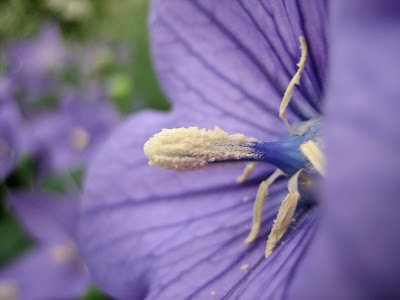
The Sleeping Beauty flower hibernates for years at a time.
During its slumber, to protect against herbivores, its petals fill with a deadly poison. Soon after its awakening, the poison disappears again.
In this latter, awakened state, the flower has a pleasant taste. It is especially perfect for teas.
Unfortunately there is no visible different between the two states.
Blue Rose
During its slumber, to protect against herbivores, its petals fill with a deadly poison. Soon after its awakening, the poison disappears again.
In this latter, awakened state, the flower has a pleasant taste. It is especially perfect for teas.
Unfortunately there is no visible different between the two states.
Blue Rose

It has only ever been seen once, and once only. The renowned Ashley Fieldcroft came across it on one of his explorations – but when he returned later with photography equipment, it was gone.
They searched everywhere, of course, but the Blue Rose hasn't been seen since.
In the intervening years, it has become the most mythical, and the most sought-after plant on the planet. It is said that whoever finds it will instantly become a millionaire.
Oriental Sunbeam
They searched everywhere, of course, but the Blue Rose hasn't been seen since.
In the intervening years, it has become the most mythical, and the most sought-after plant on the planet. It is said that whoever finds it will instantly become a millionaire.
Oriental Sunbeam

The large, red-coloured petals and leaves of the Oriental Sunbeam retain the sun's heat extraordinarily well. They are therefore pleasantly warm to the touch.
For this reason, they have been used for centuries in the cooking and cuisine of their native East-Asian habitat.
Chicory Chef
For this reason, they have been used for centuries in the cooking and cuisine of their native East-Asian habitat.
Chicory Chef

At the centre of this flower, there are several strange appendages. They look a little like antennae, but their use is in fact closer to a tongue.
Using these extensions, the flower “tastes” the air, extracting particles of dust – its only source of nutrition.
To achieve this, the tongues have to be very sensitive. In fact, they are so sensitive, that if you drop a single sugar crystal onto the flower, it will experience a taste overload, causing it to shrivel up and die.
Lying Pansy
Using these extensions, the flower “tastes” the air, extracting particles of dust – its only source of nutrition.
To achieve this, the tongues have to be very sensitive. In fact, they are so sensitive, that if you drop a single sugar crystal onto the flower, it will experience a taste overload, causing it to shrivel up and die.
Lying Pansy

This is an extremely crafty flower. It emits a sweet yellow substance that is as sticky as glue, luring insects in and trapping them on the petals.
However, unlike similar plants, it doesn't then digest the insect. Instead, it waits for a larger predator, such as a toad or bird, to try and steal its captive bug.
As this larger animal attempts to remove the insect from the glue, the flower's petals open up – and swallow them both whole.
Hypnothea
However, unlike similar plants, it doesn't then digest the insect. Instead, it waits for a larger predator, such as a toad or bird, to try and steal its captive bug.
As this larger animal attempts to remove the insect from the glue, the flower's petals open up – and swallow them both whole.
Hypnothea
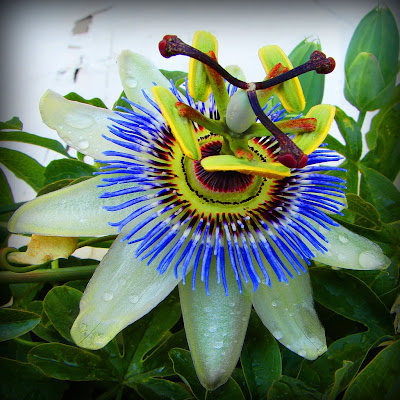
This large, bizarre-looking flower employs a unique pollination tactic.
Its circle of blue fronds gently twists and wiggle, whenever a large animal passes by. These targets can include anything from foxes and wolves, to deer, or wildebeest.
As the creature stares, entranced, the flower's central section extends, and attaches several “blobs” of pollen to its body. Later, elsewhere, other plants will extract the pollen using the same method.
Beatrice's Fountain
Its circle of blue fronds gently twists and wiggle, whenever a large animal passes by. These targets can include anything from foxes and wolves, to deer, or wildebeest.
As the creature stares, entranced, the flower's central section extends, and attaches several “blobs” of pollen to its body. Later, elsewhere, other plants will extract the pollen using the same method.
Beatrice's Fountain
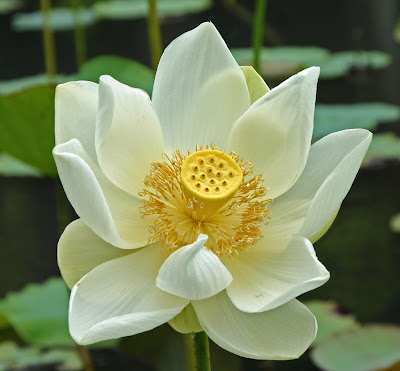
This flower's cup-like petals catch plenty of rainwater – but this is difficult to transfer to the soil, and therefore to the roots.
The “Beatrice's Fountain” solves this by collecting the water, and spraying it gently onto the ground using a perforated, nozzle-like growth. It's possibly the only plant that waters itself!
The name comes from Denmark's Queen Beatrice, who was first to use these flowers as a decorative feature in her vast, extensive gardens.
Indian Umbrella
The “Beatrice's Fountain” solves this by collecting the water, and spraying it gently onto the ground using a perforated, nozzle-like growth. It's possibly the only plant that waters itself!
The name comes from Denmark's Queen Beatrice, who was first to use these flowers as a decorative feature in her vast, extensive gardens.
Indian Umbrella
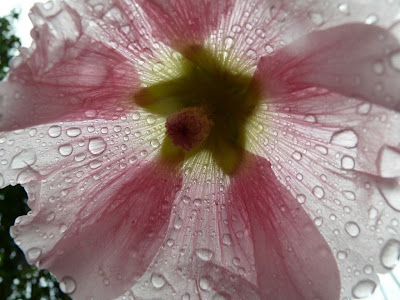
The Indian Umbrella starts off small, sheltering mice and snails from the monsoon. The urine from these creatures makes its way through the soil, to the plant's roots, helping it to grow larger.
As it grows, it begins to shelter bigger animals, including wolves, or even bears!
These bigger plants are often harvested, and sold to tourists in local marketplaces. They are surprisingly effective, even several months after they've been plucked.
Rabbit's Cradle
As it grows, it begins to shelter bigger animals, including wolves, or even bears!
These bigger plants are often harvested, and sold to tourists in local marketplaces. They are surprisingly effective, even several months after they've been plucked.
Rabbit's Cradle

In the depths of winter, and the sun goes down, it's difficult for animals to resist crawling inside this warm, soft, relaxing flower. Birds are also known to lay their eggs here.
Unfortunately for these trusting creatures, by morning, the Rabbit's Cradle will have closed completely. By the time it opens again, up to a week later, it will once again be completely empty.
The animal or egg will have disappeared forever.
False Owl
Unfortunately for these trusting creatures, by morning, the Rabbit's Cradle will have closed completely. By the time it opens again, up to a week later, it will once again be completely empty.
The animal or egg will have disappeared forever.
False Owl

The stems of these plants are particularly delicious to mice and voles.
To ward off these creatures, the flower grows an arrangement of leaves and seeds that resembles the appearance of an owl.
They are often grown in gardens and farms, to function as miniature scarecrows.
Dragon Lure
To ward off these creatures, the flower grows an arrangement of leaves and seeds that resembles the appearance of an owl.
They are often grown in gardens and farms, to function as miniature scarecrows.
Dragon Lure

This plant produces vast quantities of a very strong, concentrated nectar, which is beloved by a specific species of red dragonfly.
Because of this, it is permanently covered with a thick cloud of these insects, who feed to their heart's content.
Looking at photographs of these flowers, it appears that the red spikes – the dragonfly tails – are part of the plant. In fact, no-one has ever been able to glimpse what the flower actually looks like.
Bermuda Firebomb
Because of this, it is permanently covered with a thick cloud of these insects, who feed to their heart's content.
Looking at photographs of these flowers, it appears that the red spikes – the dragonfly tails – are part of the plant. In fact, no-one has ever been able to glimpse what the flower actually looks like.
Bermuda Firebomb
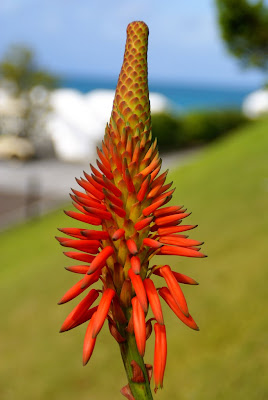
The red growths on this extremely rare plant are the hottest chilis known to man.
It is said that its roots feast on the salty tears of any animal stupid enough to actually eat it.
The chilis are available in several Bermudan restaurants, but in all cases, ordering them requires the signing of a liability waiver.
Balloon Flower
It is said that its roots feast on the salty tears of any animal stupid enough to actually eat it.
The chilis are available in several Bermudan restaurants, but in all cases, ordering them requires the signing of a liability waiver.
Balloon Flower
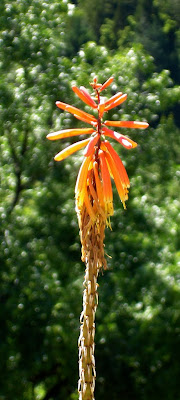
The orange fronds on this plant are actually hollow. A self-produced gas fills them up like balloons, and the flower takes off into the air.
As it drifts in the wind, its long tail drops dozens of seeds all over the land.
Zeppelin or glider flight is normally banned in areas where these flowers are known to grow, following the Hindenburg disaster of 1937.
Origami Blossom
As it drifts in the wind, its long tail drops dozens of seeds all over the land.
Zeppelin or glider flight is normally banned in areas where these flowers are known to grow, following the Hindenburg disaster of 1937.
Origami Blossom
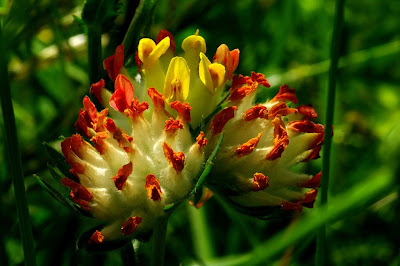
The petals of the Origami Blossom are many times lighter than a feather. They grow to full size, before detaching from their plant, and blowing away in the breeze.
At this point, the flying petals look very similar to butterflies. They are known to confuse several species of frog, which rely on these butterflies for food.
This has led to bitter arguments between wildlife conservationists, who want to protect the frogs, and botanists, who want to protect the flowers.
Foxglove Tower
 Any foxglove which grows over twenty feet becomes known as a “Foxglove Tower”. They are technically the same species, but are rare enough for them to merit special attention.
Any foxglove which grows over twenty feet becomes known as a “Foxglove Tower”. They are technically the same species, but are rare enough for them to merit special attention.
Current statistics indicate that one in every hundred thousand foxgloves grows into a Foxglove Tower. There are usually only one or two in the world at any one time.
As of yet, a specific cause or trigger remains unidentified.
At this point, the flying petals look very similar to butterflies. They are known to confuse several species of frog, which rely on these butterflies for food.
This has led to bitter arguments between wildlife conservationists, who want to protect the frogs, and botanists, who want to protect the flowers.
Foxglove Tower
 Any foxglove which grows over twenty feet becomes known as a “Foxglove Tower”. They are technically the same species, but are rare enough for them to merit special attention.
Any foxglove which grows over twenty feet becomes known as a “Foxglove Tower”. They are technically the same species, but are rare enough for them to merit special attention.Current statistics indicate that one in every hundred thousand foxgloves grows into a Foxglove Tower. There are usually only one or two in the world at any one time.
As of yet, a specific cause or trigger remains unidentified.
Subscribe to:
Posts (Atom)